Hello there!
For our second blog post we thought we thought we would change tact, share some of our learnings and talk about something that should be front of mind for everyone with a garden : Soil!
Before we get to it though, a small disclaimer. While we have spent many years working with good soils and bad soils, we have done so usually with the advice and knowledge of professional soil scientists, who we have infinite respect for. The following crash course provides basic information, but we always recommend engaging specialists for expert advice.
Right, so here goes.
The basics
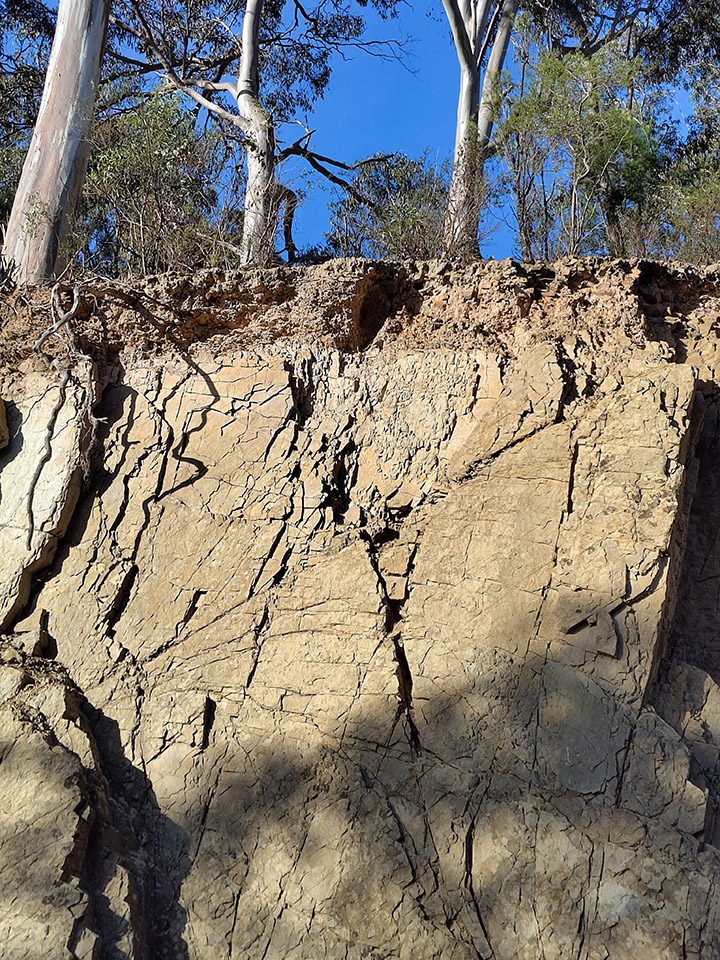
So when we talk about soil in the garden or a park, we are generally talking about topsoil. Topsoil is exactly that – it is the top 300mm(ish) of the soil profile and it is where the majority of the activity happens in terms of plants. Subsoil is definitely a thing, and warrants consideration particularly when it comes to drainage but plants don’t have anywhere near as much to do with it as they do topsoil. You can clearly see the difference between topsoil and subsoil on the side of a freeway where the road cuts through a hill. The subsoil will usually be the stuff with nothing growing in it!
There are four primary classifications of soil being Sand (coarse particle size), Loam (medium particle size), Silt (fine particle size) and Clay (very fine particle size). You can combine these factors to classify soil types, such as ‘Silty Clay’. Many people refer to the ideal being a Sandy Loam or a Loamy Sand but it’s important not to write off soils based on their classification – each has its own pro’s and cons. Growing some plants in particular soils can be challenging, but you can always improve the soil to get closer to ideal conditions. I often see people referring to their topsoil as ‘terrible clay that you cant grow anything in’ or the like, well my garden is clay and it is certainly no wasteland!
In Melbourne there are generally five different soil profiles with heavier material in the northern & western suburbs and loam & sand being more prevalent in the eastern and south eastern suburbs. It’s a bit more complex than that but you get a rough sense of what you have based on where you live.
Soil pH
pH is a measure of the acidity or alkalinity of a soil and it is one of the most important factors in achieving a healthy soil. The pH scale goes from 0 to 14 with lower being acidic, higher numbers being alkaline and neutral being 7 – generally soil pH will range from 4 to 9. As a general rule we want pH to be sitting between 5.5 and 7 in our garden.
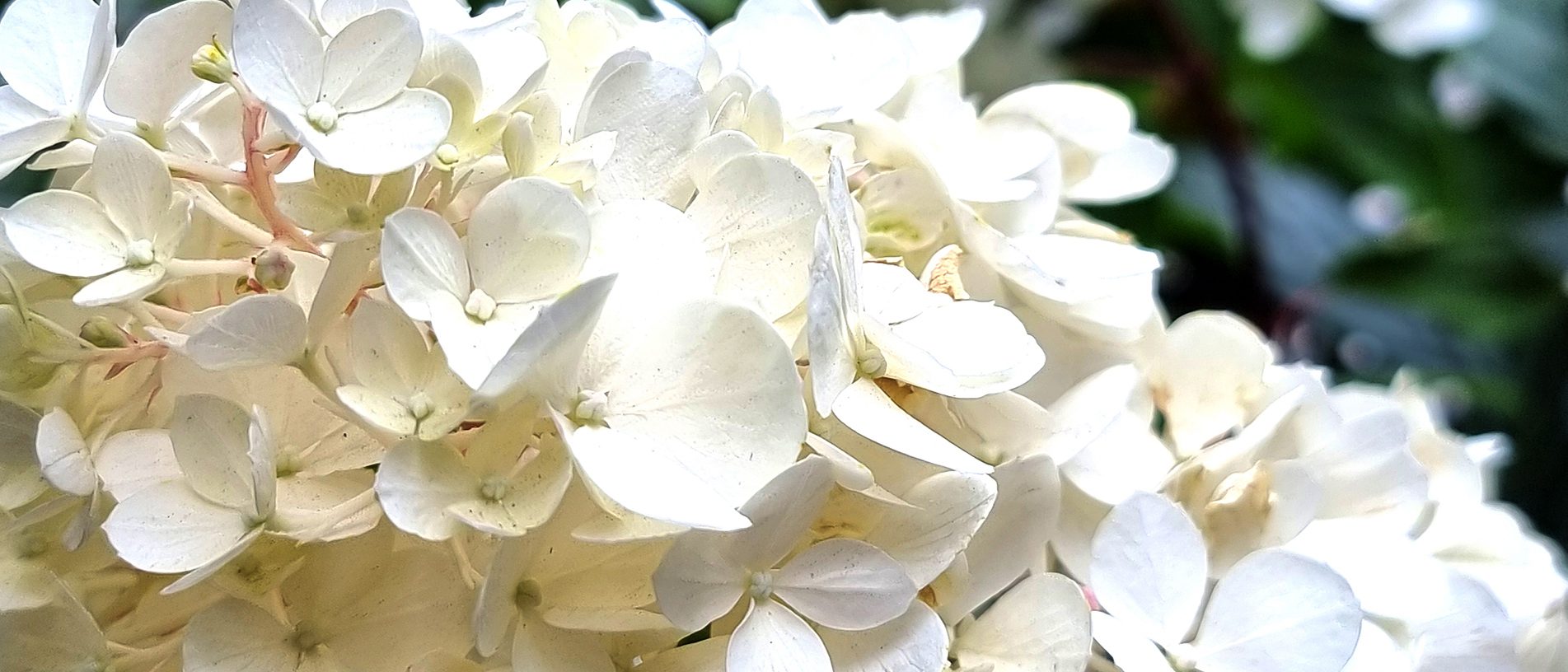
pH is crucial because it directly affects soil nutrient availability. Certain nutrients may be present in the soil, but plants can’t absorb them if the pH isn’t quite right. In the adjacent diagram (source: mavink.com) you can see that the nutrient lines are thicker in some areas than others which represents the availability of specific nutrients. You can also see that the thickness (and therefore availability) changes based on the pH of the soil. The reason that a pH range of 5.5-7 is so important is pretty clear in this graph – all the nutrients are available for plants in this range.
Hilly and mountainous areas generally have more acidic topsoil, while lower-lying areas tend to be alkaline. This difference occurs because rainfall moves soluble minerals from higher areas to the plains, increasing alkalinity.
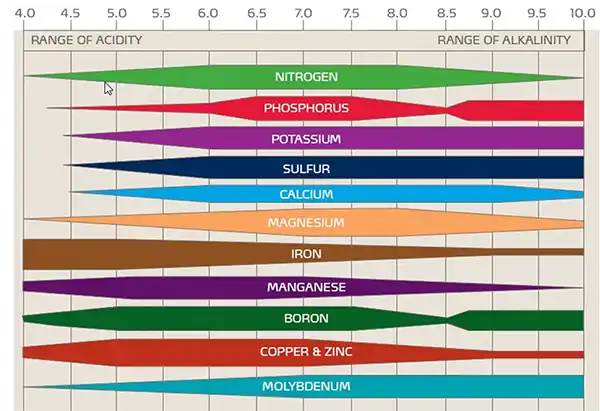
Drainage
Is important. When you check plant species’ growing requirements, you’ll often see drainage listed alongside the desirable aspect, usually marked as ‘Free Draining.’ While there are many scientific reasons why waterlogging is bad (which we won’t delve into), remember that most plants dislike wet feet unless you’re using specific species like rushes and sedges. A free draining topsoil (and subsoil) is therefore very important.
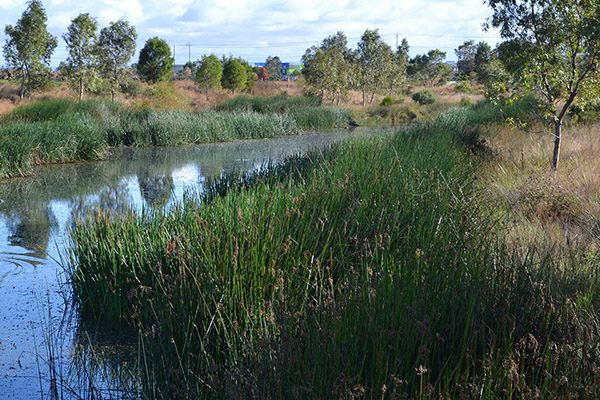
People often struggle with clay topsoil because it naturally drains poorly compared to sand, which has larger particles and therefore drains better. That is true, but drainage is not just about soil particle size, it is about pores (holes and channels in the soil). Plants, insects, and other critters create these pores, so the only truly bad clay soil is compacted and lacks these these characteristics. It is still possible to have a free draining clay soil!
Salinity
Salinity can be a massive problem if you have it, but it doesn’t often appear in urban settings. Salts in the soil affect the plant’s ability to take up water. If the soil is too salty, water will move from the plant roots into the soil rather than the other way around, dehydrating the plant. Some plants have adapted to salty conditions (e.g., coastal species), but most have not.
Outside of areas in Australia subject to dryland salinity, salty soil can unfortunately present itself when importing topsoil. Most suppliers in Melbourne recycle topsoil, and while many offer excellent quality, some use poor-quality soils or fail to ameliorate them properly, resulting in material that isn’t fit for purpose.

Organics
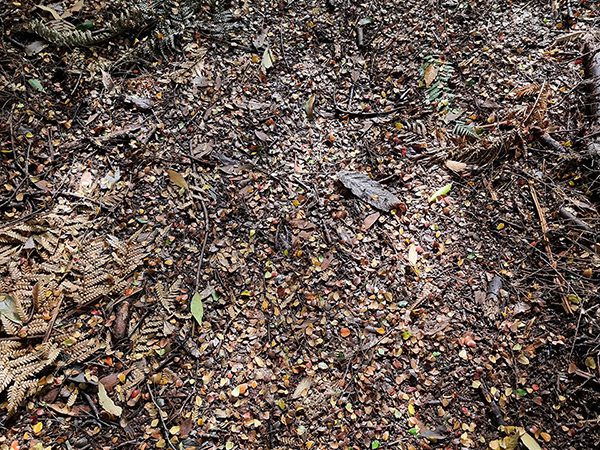
Organic material in your soil offers numerous benefits. Besides providing nutrients as they break down, they help create good soil structure, improve drainage, and increase moisture retention. However, too much organic material can be detrimental, so don’t overdo it!
So do I have good soil or bad soil?
This is where soil scientists come in. A full soil test costs a few hundred dollars and requires you to package up a very full sandwich bag and send it to your lab of choice. They will tell you exactly what your topsoil is regarding the above characteristics and provide recommendations on how to improve it.
If you are buying topsoil rather than working with what you have, some suppliers will have soil tests of the batch. It’s worth asking if they have one and checking that it’s recent enough to reflect the material in the stockpile. Unfortunately, many suppliers sell poor-quality soil, so visit a trusted supplier and avoid cheap options.
If that sounds like too much, a good starting point is to visit your local hardware store and pick up a pH test kit for about $30. This will give you a good baseline of your topsoil type and identify any major issues.
Additionally, closely examining your soil will help you understand whether it is clay or sand and if it has organic material. You can perform wetting tests yourself to classify the soil and better understand drainage, but generally, these tests aren’t necessary for a baseline understanding.
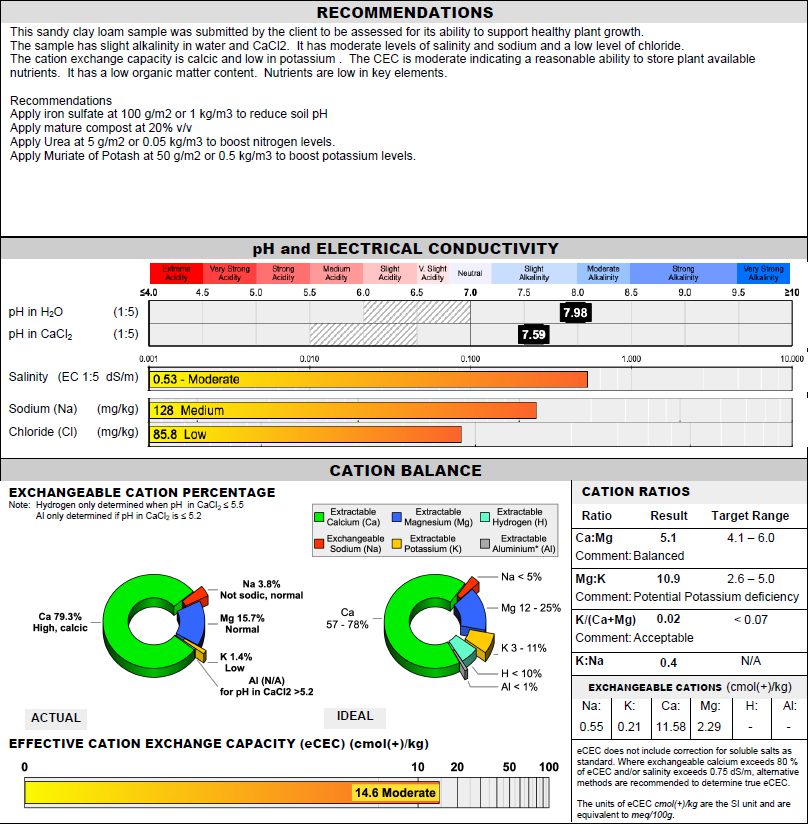

Another clever trick is that plants can show symptoms of nutrient deficiencies in their leaves. Symptoms can vary between species, but common ones include nitrogen deficiency (consistent paleness or yellowing of leaves) and iron chlorosis (yellowing of leaves but leaf veins stay green).
You can explore signs of nutrient deficiency like leaf discoloration, wilting, or necrosis (blackened, dead parts or spots), but remember that these features can also result from water stress or disease.
I have bad soil, how do i fix it?
Like all unhelpful answers, the answer is ‘it depends’. If you have heavy clay material, adding gypsum and well-composted organic material will help with drainage, at least in the short term. Have sandy soil? You might want to add organic material to help it hold moisture and nutrients rather than letting them drain away.
If you want to adjust your pH, that is doable, but there are limits. Raising the pH through cultivation with lime is fairly easy, but lowering it is harder and takes time. Adding sulphur and/or organics will help, but it relies on microorganisms to do some work for you, so expect to see changes in about six months.
The best thing you can do for any garden is to mulch. Mulching keeps weeds out, helps retain moisture, encourages microorganisms, and attracts insects that process organic matter and improve structure.
Everyone has their own opinion on mulches, but I prefer coarse pine bark at around 75mm deep. It stays permeable, allowing water to reach the soil while insulating the surface and keeping moisture in the soil for the plants.
Respect your soil and it will respect you.
It’s easy to overlook soil and what’s happening underground because we can’t see it, but there is much more going on down there than above. The best strategy is to get your hands dirty to see how much life is down there and read up where you can. The relationships between plants, soil, fungi, and other microorganisms are astonishing and mind-blowing when you delve deep.
If it’s all too much to process, we are always here to help put a design together that suits your soil or give you some tips in person.
